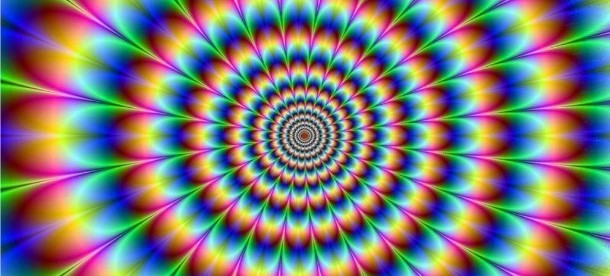Mr. Acid

The typical LSD “hit” has about 100 micrograms of the drug in it. At the high end, that means a gram contains about 10,000 doses.
A kilogram of LSD has about 10 million hits in it. It should go without saying that a kilo of LSD is a whole lot of acid. But not for William Leonard Pickard. At his peak, Pickard was producing a kilogram of the stuff every five weeks. Pickard was born in California in 1945; his father was a lawyer and his mother an expert at the Centers for Disease Control and Prevention (better known as the CDC). He graduated from Purdue University and returned to California to study advanced chemistry, ending up with a high-level position at UCLA’s Drug Policy Research Program in the 1980s. How he obtained his knowledge of drugs and drug making is unclear, but we are sure of one thing: He made a whole lot of LSD.
In 1988, Pickard was making LSD at an architectural shop outside San Francisco, when a neighbor called authorities after detecting a foreign odor. The FBI raided what turned out to be Pickard’s lab, discovering 200,000 doses of acid and capturing the mastermind on the premises. Pickard was convicted of manufacturing LSD and served a five-year prison sentence.
After his release, Pickard soon returned to bad habits—and multiplied them. With an accomplice named Clyde Apperson (whose role was limited to setting up and taking down acid labs), Pickard traversed the United States, creating temporary LSD labs. He was in Oregon in early 1996, then in Colorado later in that year, and from part of 1997 through most of 1999, in Santa Fe. In his labs, Pickard cranked out absurd amounts of the drug, moving on to another location before neighbors took notice.
Pickard was apprehended in 2000 in Wamego, Kansas, after another accomplice turned informant and assisted the Drug Enforcement Administration (DEA) in apprehending him and Apperson. The informant, Gordon Todd Skinner, advised the DEA that the pair was moving operations to a former missile silo in that town (even though Skinner had actually moved the lab already but not yet informed Pickard or Apperson). The DEA arrested the pair when they attempted to relocate it again, in the back of a Ryder rental truck a few days later.
Per the Washington Times, the amount of LSD available in the United States plummeted by 95 percent after Pickard’s arrest. He is serving two life sentences in Arizona.
 Bonus Fact: The little circles or dots you may “see” when your eyes are closed are hallucinations called phosphenes. Typically, when your eyes are open, light hits your retinas and your eyes’ optics work to build a picture of what the eyes are focused on. But the retinas can be stimulated mechanically as well—if something pushes down on them, the pressure will be translated into nonsensical images. When you rub your closed eyes, the pressure creates the images you’re experiencing. (This is also why you sometimes see “stars” when you sneeze or get hit in the head.)
Bonus Fact: The little circles or dots you may “see” when your eyes are closed are hallucinations called phosphenes. Typically, when your eyes are open, light hits your retinas and your eyes’ optics work to build a picture of what the eyes are focused on. But the retinas can be stimulated mechanically as well—if something pushes down on them, the pressure will be translated into nonsensical images. When you rub your closed eyes, the pressure creates the images you’re experiencing. (This is also why you sometimes see “stars” when you sneeze or get hit in the head.)
From the Archives: The Eyes Have It: You know the little dots you see when you look at something blue, like the sky? (If not, don’t worry — the article explains.) Those aren’t hallucinations. They’re white blood cells.
Take the Quiz: Can you determine whether each clue is a drug or a Pokemon? The second quiz in a series of such quizzes. The first one is available here.
Related: This article first appeared in my first book, Now I Know: The Revealing Stories Behind the World’s Most Interesting Facts — 4.8 stars on 117 reviews so far. (That’s pretty good, you should check it out.)
